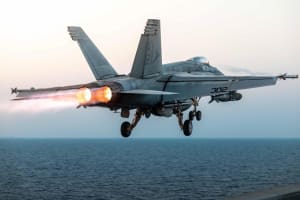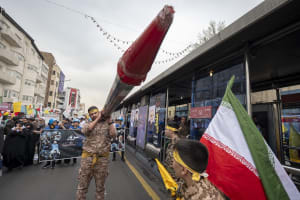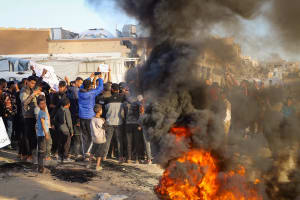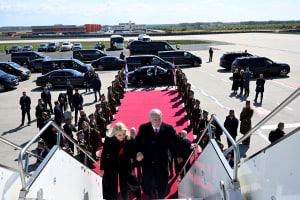Hezbollah threatens ‘stronger‘ retaliation after Israeli answers intense bombardment with strikes deep in Lebanon
IDF: So far 4,500 Hezbollah targets hit, 300 operatives killed and 750 wounded

The situation on Israel’s northern border has reached another boiling point, as Tuesday saw some of the heaviest blows exchanged between Israel and the Lebanese terror group Hezbollah since the hostilities began last October.
After Israel carried out two waves of airstrikes against strategic Hezbollah targets located deep inside Lebanese territory, the group’s deputy leader Naim Kassem stated that Israel had “crossed the line.”
“Hezbollah will not be silent about the Israeli attacks,” a source told the London-based news outlet The New Arab.
“The response will be the same and stronger. All options are open and Hezbollah is prepared and ready for any expansion of hostilities,” the source added.
Hezbollah had fired two heavy barrages of about 70 rockets and then another 30 rockets toward northern Israel in the span of two hours on Tuesday morning, after the IDF struck targets in the Baalbek region the night before.
The terror group continued its attacks throughout the day, claiming to have carried out 10 attacks against Israel, five of them using heavy Burkan-type rockets. The IDF said that attacks were registered in the areas of Zar’it, Shtula and Rosh Hanikra.
מטוסי קרב תקפו לפני זמן קצר תשתית טרור של ארגון הטרור חיזבאללה במרחב אל עדייסא ומבנה צבאי של הארגון במרחב עייתא א-שעב.
— צבא ההגנה לישראל (@idfonline) March 12, 2024
במהלך השעות האחרונות זוהו מספר שיגורים שחצו משטח לבנון לעבר מרחבים זרעית, שתולה וראש הנקרה>> pic.twitter.com/ohK3Q8txdV
In response, Israel carried out two more waves of attacks against targets in the Baalbek region. The town of Baalbek lies in the Beka’a Valley in the northeastern part of Lebanon, about 100 kilometers (about 62 miles) north of the Israeli border.
The majority of the area is settled by a Shiite population and is seen as part of Hezbollah’s heartland, where much of its strategic infrastructure is located.
Israeli fighter jets attacked two military headquarters south of Baalbek in two attack waves on Tuesday.
“Hezbollah used these sites to store significant assets used to strengthen its weapons arsenal,” the IDF said in a statement.
Footage circulating on social media showed large smoke pillars rising from the areas that were struck.
مراسل المنار في البقاع :
— علي شعيب || Ali Shoeib 🇱🇧 (@alishoeib1970) March 12, 2024
الطيران الحربي المعادي يشنّ غارة جوية بالصواريخ مستهدفًا منطقة "ضهور العيرون" خراج بلدة #سرعين pic.twitter.com/IDhAk8sT90
In addition, the IDF struck military targets in the areas of al-Khayam, Bint Jbeil, al-Adisa and Ayta al-Sha’ab.
Over the last five months of fighting, the IDF said it struck over 4,500 Hezbollah targets, including 3,100 with artillery, tanks and other ground equipment, and 1,200 with airstrikes.
According to IDF statistics, Israeli forces have eliminated more than 300 Hezbollah fighters, including 5 senior commanders, and wounded some 750 terrorists. Many of the killed and injured were part of anti-tank missile squads that were hit while directing or carrying out attacks against Israel.
“We have been damaging Hezbollah's capabilities, the infrastructure it has built, and its activities and commanders,” said Maj.-Gen. Uri Gordin, the head of the IDF’s Northern Command.
“In the last five months, the number of targets we attacked, and the number of targets that we approve every day for tomorrow, and every week we approve for the next week - this is very, very impressive to me,” said Gordin.

The All Israel News Staff is a team of journalists in Israel.














